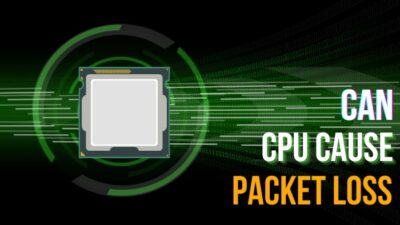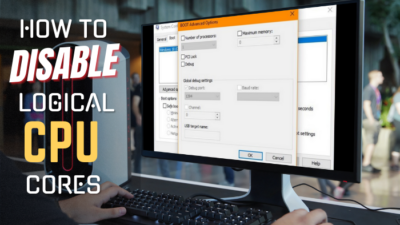Not long ago, AMD was the only manufacturer that provided powerful APUs with Vega graphics & later RDNA. To compete in the market, Intel played its role by improving UHD integrated graphics, titled iris Xe, which is significantly better.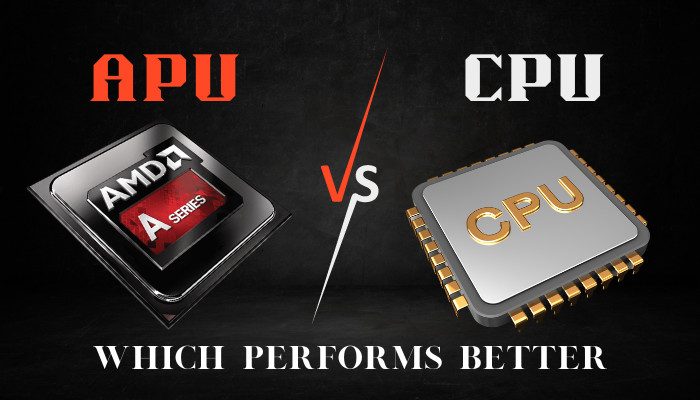
Since Intel & AMD have integrated iGPU in their processors, this diversity is urging the acceptance ratio between APU & CPU.
The differences and advantages between APU & CPU are analyzed in this article to enlighten you with the proper knowledge.
What is a CPU?
Computer processors are widely known as CPUs. The full form of CPU is the Central Processing Unit, which is the core part of a Computer. Every other component(GPU, RAM, Storage devices) is directed and utilized by the CPU.
But what makes a CPU different from an APU?
The accelerated in-built graphics functionalities. The CPU may or may not have a graphics unit to serve the basic Display output. Let alone emphasized GPU computation. Even if a CPU has HD/UHD graphics, it’s basic.
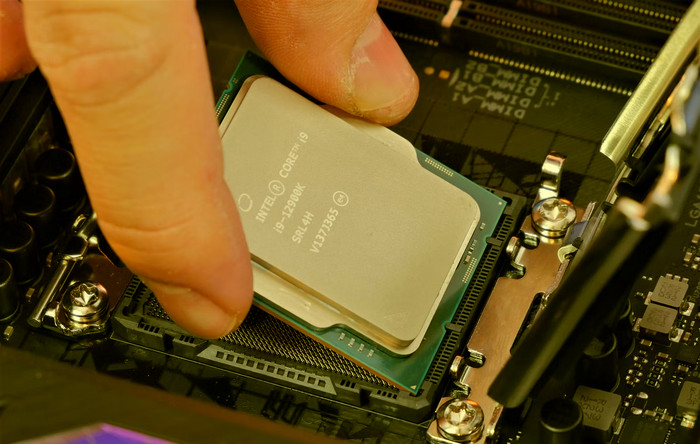
But the question is, do all CPUs have integrated graphics?
No, not every CPU has integrated graphics. In fact, a processor without any graphics is the ideal example of a CPU, which is Intel’s X-series & F-series and AMD’s X-series processors.
What is APU?
The APU refers to the Accelerated Processing Unit, which doesn’t clarify the whole picture. The basic elaboration is inadequate, to indicate the actual difference between CPU & APU is, graphics support.
CPUs have multiple cores with ALU(Arithmetic logic unit) & Memory controller, which is the basic diagram of a CPU. On the other hand, APU has all those things with an extra graphics unit stashed. These integrated graphics are different than the dedicated/external ones.
AMD has a graphics unit named Vega & RDNA graphics, and Intel recently came up with iris Xe graphics built inside the processor, which we consider APU. You can also check what integrated graphics your processor has from the system.
What are the differences between APU & CPU?
Despite the fact we know that every processor works the same way, APU operates an identical process along with the additional graphics unit built in. Luckily, I’ve used both, except for the iris Xe. graphics, which isn’t that powerful graphics.
It’s a matter of delight that Intel also improved their integrated graphics simultaneously with AMD, which wouldn’t have been possible if AMD didn’t take the step first.
Here are some aspects derived, where APU differs from CPU with reasonable terminologies:
Architecture
The architectural variation is the primary aspect where APU is different from the CPU.
Although distinct Processor manufacturers like Intel & AMD are already following separate patterns, APU build-process and architecture are separate within the same manufacturer.
Intel fundamentally designed their chipset die with multiple cores, accumulating ALU (Arithmetic Logic Unit) and memory channels & controllers. The CPU arch is called x86.
AMD followed the core fundamentals but was inspired by the SoC chipset’s VLSI design and integrated with Infinity Fabric. Such design provided the advantage of including powerful integrated graphics in their CPUs, bringing an integrated GPU revolution.
Luckily, where both CPU giants are competing, providing special line-up segment processors with powerful iGPU became beneficial for consumers. And those integrated GPU-based CPUs hold an extended controller, which use some of the RAM storage to use as dedicated graphics memory or VRAM.
However, both companies offer a similar type of architecture with different chipset designs that work pretty much the same. But it’s a matter of fact that AMD is the pioneer of iGPU, which gives them the right to entitle their iGPU-based processors as APU exclusively.
Performance
Performance expansion is a common desire among advanced PC users. This hooking factor motivates the users to buy the latest and higher tier processors.
APU is developed keeping such things in consideration. In a world with high-res videos, images, games, and 3D experiences, GPU is a crucial element.
CPU may be capable of handling more powerful tasks than video processing. Still video graphics acceleration has become a necessitous matter, as video performance is the main difference between an APU & a CPU. APU dominates the video performance craving community by storm.
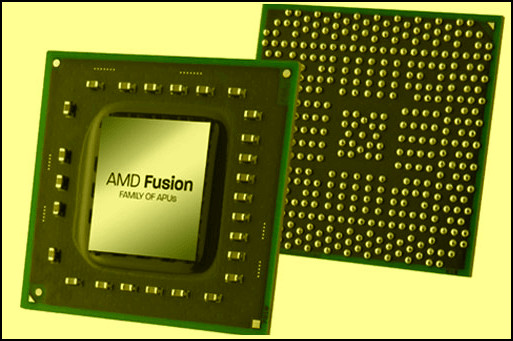
Consumer Market
Although senior individuals don’t require a powerful PC with a dedicated GPU, they might need to enjoy Blu-ray videos and 4K resolution movies.
APU can handle those circumstances without having a dedicated GPU installed. Many other users have such a limited need for graphics, and this is a massive amount of user base that needs APU. AMD CPUs with iGPU are better than intel in this particular situation.
Alternatively, CPU demand stays at its peak among creators and gamers. Because they usually mandate a dedicated GPU to impose the graphics workload intense. CPUs perform better in such cases.
Is APU better for budget gaming?
The demand of specific consumer markets varies over needs. Not everyone plays Triple-A-type games on their PC. Most people like me just require reliable and decently powerful graphics to complete some particular work.
Watching a Blu-ray, 4K video, or editing an FHD video requires average graphics support, which Intel UHD graphics can’t handle.
Plus, editing multiple-layer images and even some basic online competitive games like CS-Go can be laggy on such weak graphics. Those are the most suitable places an APU fits in perfectly.
Modern games like Cyberpunk 2022, Shadow of Tomb Raider, and some multiplayer games like Valorant and Apex Legends are considerably playable on my Ryzen 5 5600G CPU with the latest RDNA-based graphics. But it’s limited to 1080p scale to achieve respective FPS.
New Intel iris Xe graphics aren’t as capable of gaming as Vega or RDNA iGPUs. But the good thing is Iris Xe graphics are better than previous UHD graphics, as it gives excellent support for high-res media consumption and basic video and image editing.
Therefore, if you are a part-time Gamer and do not intend to push gaming quality limits but to play decently, APUs are the best fitting choice.
On a side note, read our article to know if you can replace an integrated graphics.
Is APU Similar to Integrated Graphics?
Laptops come with integrated graphics units to give users moderate to professional support for the high-resolution workload. Which is a separate chip built on a motherboard.
But APU is different; the graphics controller is situated inside the processor. And it can only provide up to an above-average graphics performance instead of professional performance.
When AMD first introduced the A series APUs, those were not as capable as it’s now. Ryzen processors became more powerful, integrating Vega graphics. Later, it turned out to be as powerful as entry-level dedicated GPUs.
Hence, the battery life of a laptop is arguably the most concerning aspect; power efficiency acquired a new level with APUs. Because the need for a separate energy consumption unit like a dedicated integrated GPU is minimized in APU.
If you’re wondering whether all CPUs have integrated graphics or not, go through the embedded article.
Which One is Better? APU or CPU+GPU Combo?
Intel CPUs arrive with multiple cores; some are efficient cores to handle the normal workload, and others, titled high-performance cores, are responsible when a heavy workload is required.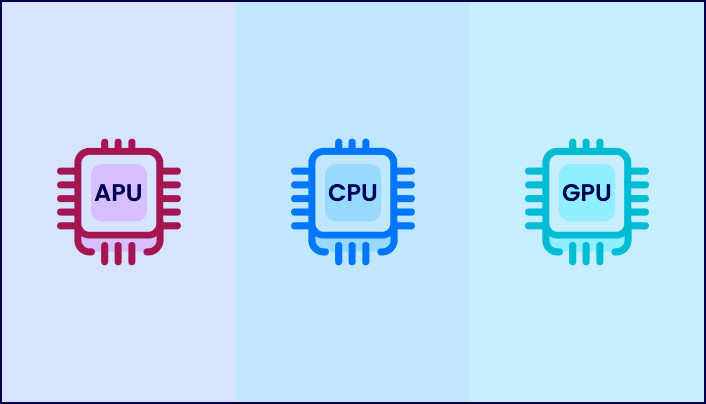
Reasonably, I’ve already mentioned that I’ve used both a system with an APU & another system with a CPU+GPU. Each system excels according to the user’s preferences and use cases. But AMD feels more convenient to price.
Unlike Intel, AMD’s cores are all high-performance, and APUs constantly perform at peak state to support graphics-intensive works. Such power brings the question of acceptability between integrated graphics & dedicated graphics.
Obviously, an APU can’t handle as much graphical content as a dedicated GPU can.
It’s quite simple that a dedicated GPU has a separate VRM section, cooling system, VRAM, and so on to support higher GPU-intensive tasks.
So, it’s proven that a mid-tier dedicated graphics card with a decent processor can perform way better than an APU.
Wisely Choose the limit of your workload and select which one to buy.
Is APU Replacing GPU?
As I declared earlier, no APU can push the GPU performance as physical GPU cards are highly-capable. GPU-intensive works will always require a Graphics card rather than APU.
Although APUs like Ryzen 7 5700G can perform well in certain circumstances according to the price it offers, tasks like 3D modeling, 4K video rendering, and AAA-type games with 4K resolution won’t be satisfactory.
People with finite gaming needs like FHD video editing and moderate GPU-heavy work will be satisfied by such APUs. But there is no way an APU can beat or replace GPUs. Plus, you can’t replace the integrated graphics from the CPU.
APU Equivalent GPU list
Even though APU graphics aren’t similar to mainstream Graphics cards, some entry-level and semi-entry-level cards perform likewise.
Near-performing graphics cards are compared with different APUs are shown below:
| APU list | Integrated Vega GPU | Similar Graphics Card |
|---|---|---|
| R3 3200G | Vega 8 (1250MHz) | GT 710 (954 MHz) |
| R5 3400G | Vega 11 (1400MHz) | GT 1030 (1468MHz) |
| R5 5600G | Radeon™ Graphics (1900 MHz) | GTX 1050ti (1290MHz) |
| R7 4700G | Radeon™ Graphics (2100MHz) | RX 550 (1100 MHz) |
| R7 5700G | Radeon™ Graphics (2000MHz) | RX 560 (1275 MHz) |
Above, in the table—some APUs are compared to their equivalent Graphics Card.
NOTE: Here in this table, Equivalent doesn’t mean the same performance. Some APUs perform better in some cases and worse in other areas.
FAQs
How Much RAM do I Need for an APU?
APU needs 2 Gigs of RAM to create VRAM that works like a dedicated graphics Card.
Can I Play GTA V on APU?
Fortunately, GTA V is smoothly playable on most APUs. But If you desire to play in higher resolution and More FPS, Graphics Card is a must.
Which is the Best APU processor?
AMD Ryzen 7 5700G is the most powerful APU yet in the market, Which has 7 nm Radeon RX Vega graphics with eight Cores.
Does Intel have any APU?
Intel also has a product lineup similar to AMD’s APU, which is named Tiger lake. Core™-i7-11370H is a good example.
Final Thought
There is no influential clash between the APU, CPU, and GPU. But confusion often appears when an end user tends to choose the right one.
Choose or suggest according to the user’s requirement to save bucks from waste. Overkill won’t just cost you one time while you purchase; it will also waste electricity and space in your PC that you didn’t actually need.
Comment for more information if you crave knowledge thrust. Explore more of our articles if you feel it’s being helpful.

